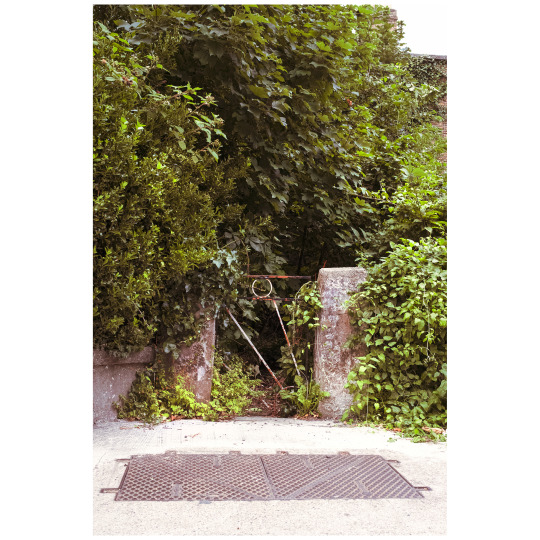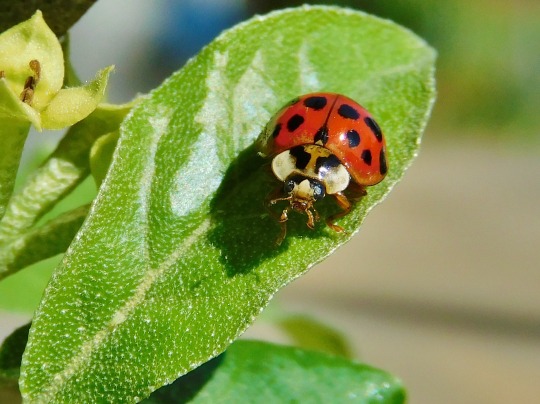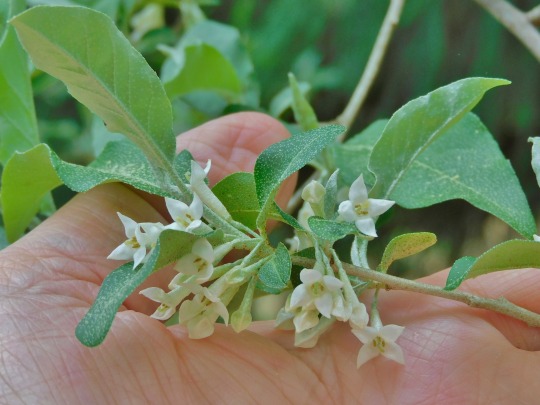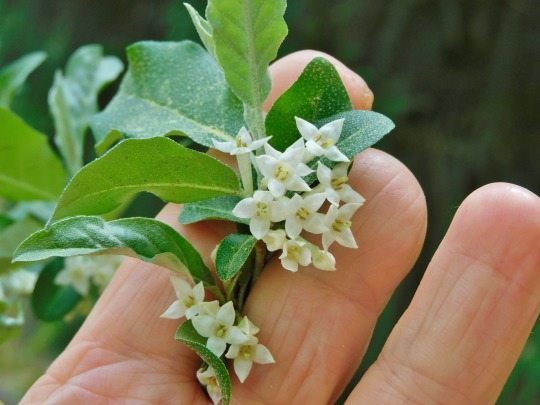#nonnative species
Explore tagged Tumblr posts
Text
i will know peace when ppl stop releasing nonnative insects in their gardens as "pest control"
#this post is about european and chinese mantids#also side note stop using the word pest#<- for some reading on that i recommend the following book#Pests by Bethany Brookshire#pests#garden pests#entomology#insect#insects#bugs#chinese mantis#european mantis#Tenodera sinensis#Mantis religiosa#nonnative#invasive species#nonnative species#native species
15 notes
·
View notes
Text

Snag, Dublin
#snag#dublin#ireland#photography#nonnatural world#nonnative species#anthropocene#colour photography#cityscape#environmental infastructure#city environment
9 notes
·
View notes
Text




An Asian Lady Beetle (Harmonia axyridis) out on an Autumn Olive shrub (Elaeagnus umbellata) this fine morning.
#nature#my photography#asian lady beetle#nature photography#lady beetle#wildlife photography#beetle#backyard nature#insect#autumn olive#shrub#nonnative plant#invasive species#landscaping
11 notes
·
View notes
Text
the lawn looked so much worse than i realized until i took those pics lol. i think im going to do it. im going to buy some ground covers and sneakily plant them and then oops they're going to escape containment, how silly of me, and hopefully they won't have anyone come with weed killer for a while and by then they will be entrenched
#i KNOW these guys are not going to lay sod. it's expensive and they do not charge much for rent so they probably can't afford it.#it's so weird to me how ppl expect herbicides to target this huge array of undesirable endemic species but also preserve nonnative grasses
4 notes
·
View notes
Text
its very amusing to me when skilled horticulturists know fuckall about native plants
#personal#referencing the bonsai meeting earlier - i was complimented on my juniper and asked the species#species is juniperus virginiana. of which the common name is eastern redcedar. it is not a cedar.#i told her the common name to which she immediately said “nono... maybe nana juniper?” to which an onlooker disagreed#as did i considering i have a nana and they look nothing alike#and im like “i dug this tree up from my yard. its a seedling from our adult trees. the other tree i brought in today is the same species.”#she did not understand this and kept suggesting things#like this is a tree native to my area that i dug up from my yard. not a nonnative ornamental that was planted intentionally.#i didnt think to mention that it is in fact a juniper because im autistic and bad at thinking of things like that in the moment#anyway. funny in the moment sort of irritating in hindsight
19 notes
·
View notes
Text

bugs in my backyard
#the power of planting native plants#and having rocks and chunks of wood lying around#but also a lot of bugs for some reason like to sit on the (nonnative) ficus for some reason#at some point I want to try to count everything I've seen on the ficus#invertebrates#arthropods#nature#bugs#I think a couple of these observations may be not in my yard but there's definitely more species than this here anyway#I can't ID all of them
5 notes
·
View notes
Text
Oh also there's potential for the work I'm doing to reveal a massive conservation bluder being actively made by government fish and wildfe management agencies here in the US. 😬 More to come on that if I can confirm my suspicions.
But its got me wondering about the biggest modern conservation blunders? Anyone know any they can share?
I'm talking about actions taken as a positive step towards conservation (especially if trying to conserve imperiled species) that turned out to have the opposite effect. Not so much the dumb stuff humans did back in the day for other motives, like hunting species to extinction or introducing invasives because we wanted them around for food.
#conservation#wildlife#wildlife and fisheries#endangered species#conservation isnt super effective if you were introducing a nonnative all over instead of the thing you thought you were saving
3 notes
·
View notes
Text
gonna be honest nothing has fucked with my head more than learning that the UK only has three species of snake. like what do you mean three? three species with twelve subspecies? three native species but a ton of other nonnative ones? three species technically but it's an accident of ancient taxonomy?
nope. just three
33K notes
·
View notes
Text
@moran-with-a-g
So here is the most recent one being shared about by accounts like fairuzfan.

The article itself states this -

Notice they're not saying what type of pine tree. There's no mention in the article what species they're referring to. They simply state "pine tree" because any quick fact check or "internet research" would show that the Aleppo Pine and Turkish Pine are endemic to the region, and the Canary Island Pine is closely related, adapted to the same climate and region, and fire resistant (as is the Turkish, the Aleppo is actually fire adapted and benefits from fires).
The article uses this narrative of "Colonial Jewish Ashkenazic Zionist Supremacy" to make its argument that three "nonnative pine trees" were used for nefarious reasons.

This is the first line from a small Middle East Eye article about the wildfires outright saying that Aleppo trees are nonnative.

Here is Code Pink's claim that the pine trees are nonnative.

This is from an instagram reel from an account called Palestiniancomedy that has been reblogged by JVP claiming that the pine trees were nonnative European species without telling the viewer what the species were at all. It just makes the claim "European pine tree".

Palestinianyouthmovement has also been spreading this narrative on IG (thank you @thestudentempanadastudentempa for the image).
And these are just some of the posts and articles that are out there that are recent. There's some going back years and the majority of them make the same "pine tree" claim (I did find a few that actually mentioned eucalyptus to my surprise, but still maintained that the pine tree planted was a nonnative species without giving the scientific name, which is a big red flag that they don't want you to learn what species were planted and that they are actually endemic).
Hell, if any of these posts, articles, or rants said something about the Canary Island Pine* being a nonnative species that was introduced then I would give them some points. But you'd then have to contend with the fact that the CIP is a fire resistant species that is adapted to an arid Mediterranean climate and is closely related to the Aleppo Pine and Turkish Pine (both of which are native to the Mediterranean and Middle East and adapted for that climate).
If any of the writings really discussed the ecological impact of planting such trees I'd give them points as well. If they mentioned anything about pests and diseases in forests and how they make trees more susceptible to fires by killing and/or damaging them then they're get some consideration.
But these all use the "European Colonial" rhetoric to push a particular narrative that is simply false.
*mistype on my part in the original post that I omitted the Island portion of the common name
I do love seeing all the antisemites scream about pine trees in Israel whenever there's some sort of ecological issue or disaster going on or they want to use them as "proof" that Israel is a white European colonial project. Why? Because I've never seen them say what pine trees are the culprit. It's always some allusion to pine trees being non-native to the region and that they were planted to make the country "more European" or something like that. The articles are written in English for a Western audience that has pines in their backyard and are likely associated with the winter months in their culture. The implication here is "how could your Winter Xmas Pine Tree survive in the desert?!" which leads to the colonial assumptions and so on and so forth.
This entire schtick plays upon the general populace not understanding anything about ecology, range distributions, species, and other biological concepts. Most people see the term "pine tree" and assume it's the same pine trees they've seen their entire lives. The concept of different species all being colloquially referred to as "pine tree" is not a common conception.
So if you're reading any of those articles or posts that scream about colonialization because of "pine trees" then you need to stop and ask "what species?" Because the JNF has planted 3 particular pines - The Aleppo pine (Pinus halepensis), the Turkish Pine (Pinus brutia), and the Canary Pine (Pinus canariensis).
All three species are endemic to the Mediterranean region and are subtropical species. Meaning, all three have distributions that include Israel in their native range and have a biological history of being there. At one point or another many of them were cut down for some use (from what I understand, primarily for ship construction during the Ottoman Empire). In fact, the Aleppo was almost wiped out from its Middle Eastern distribution until it was brought back (and the three species are all closely related and adapted for the climate in the region).
Now, I've seen variations of the land shouldn't have been greened, they cut down native forests, they drained swamps, etc, etc... as criticisms. I even had the "they shouldn't have drained and greened the swamps" as an argument, barring the fact that the swamps only existed because the native forest was cut down for use by the Ottoman's and as such caused environmental degradation and change.
And the thing is, there's valid criticism for planting so much pine. It's a very dry tree species that catches fire easily. Especially when it becomes sick and/or damaged. There's also concern that it's planted in parts of Israel that are not suitable for said tree species. But at no point are they a foreign invasive species. They are native to the region.
However, what stands out the most to me is that never do one of these articles, blog posts, rants, or antisemitic screeds mention Eucalyptus.
That's right.
Eucalyptus, a genus (or Tribe) primarily endemic to Australia, was brought in to drain swamp, wetlands, and marshlands and make them habitable. And not just one! But multiple species were introduced for this purpose (Eucalyptus camaldulensis, Eucalyptus gomphocephala, and Eucalyptus torelliana).
Not a single writing has ever mentioned these trees, and that should be a big warning flag that what you're about to read is mired in half truths, falsities, and lies of omission besides outright ignorance. Solely focusing on pine trees is to elicit the response I mentioned above in Western audiences who only associate "pine tree" with their winter time and climate. It's a malicious technique to manipulate the reader and come to a false conclusion and assumption that will stoke their outrage at the "colonial" behavior of planting "colonial non-native" trees.
#jumblr#antisemitism#israel#I/P#aleppo pine#pine trees#eucalyptus#Talk about the pinus genus monoculture if anything and how that's bad#Talk about how it's hard to address pinus genus monocultures and break them up with other native trees because pinus grows fast#and other species of trees don't grow as quickly#Talk about how pinus genus trees are usually the first steps in establishing forests after disturbances (forest fires) which make way#for other species of trees to be planted and that replanting pinus interrupts the progression of succession#But no. It's always a false narrative that the pines that were planted were nonnatives and not adapted to the region
734 notes
·
View notes
Text
Simple lifeform facts I take for granted that I've now seen blowing people's minds on here:
That sea urchins walk around and have mouths with teeth on their undersides
That corals are related to jellyfish
Barnacles being related to crabs and shrimp
Ants being an offshoot of wasps
Termites being totally unrelated to ants and all similarities just being convergent evolution (they're actually a group of cockroaches, but even science didn't know that part until a few years ago)
Starfish having an eye at the end of each arm
That the bodies of ticks and mites are also their heads, essentially big heads with legs (they even frequently have eyes way up on "the body")
Sperm whales have no upper teeth, and also their bodies are flat from the front
Goats also having no upper (front) teeth
Tapeworms having no mouth at all and just absorbing nutrients over their entire body surface
That flies are bigger pollinators than bees
That moths are bigger pollinators than bees
That wasps are just as important pollinators as bees (more important to many groups of plants) and when we say they're "less efficient" at it we just mean individually they get a little less pollen stuck to them.
That honeybees are nonnative to most of the world and not good for the local ecosystem, just good for human agriculture
That earthworms are also nonnative and destructive to more habitats than the reverse
There being no hard biological line between slugs and snails; all slugs aren't necessarily related to each other and there are gastropod groups where some have shells and some don't
That ALL octopuses (not just the blue ring) have a venomous bite
Most jellyfish and sea anemones being predators that eat fish
"Krill" being shrimp up to a few inches long and not some kind of microbe
Blue whales therefore being the deadliest predators to ever evolve as they eat up to several million individual animals per day
That krill are still "plankton" because plankton refers to whatever animals, algae and other organisms are carried around by the sea's currents, not to any particular group of life or a size category
Fungi being no more related to plants than we are, and in fact more like a sibling to the animal kingdom if anything
Venus fly traps being native to only one small area of North America in all the world
Parasites being essential to all ecosystems
Leeches not having a circular ring of teeth anywhere
That algae is not a type of plant
That most seaweed is just very big algae
That enough wood ends up in the ocean that plenty of sea life evolved to eat only wood
Speaking of which the fact that the "ship worms" that make tunnels in wood are just long noodly clams
Butterflies technically just being a small weird group of moths we gave a different name to
That insects only get wings once they reach maximum size and therefore there can never be a younger smaller bee or fly that's not a larva
Spiders not being any more likely to kill their own mates/young than just a cat or dog might, for most species maybe a lot less often?
6K notes
·
View notes
Text

Trellis, Dublin
#trellis#dublin#anthropocene#nonnative species#wood#material#cityscape#photography#nonnatural world#photo#city
5 notes
·
View notes
Text



Autumn Olive (Elaeagnus umbellata) are coming into bloom now.
#nature#my photography#autumn olive#nature photography#invasive species#backyard nature#landscaping#bushes#garden plants#nonnative
7 notes
·
View notes
Text
i know most of you picking sawflies have seen sawfly larvae and thought "aww! what a cute caterpillar!" there was a video going around of one just recently but no one knew what it actually was. think before u speak
Ultimately this has nothing to do whatsoever with this bracket, but I have a fun cool extra series of polls I want to exploit my tournament blog clout to get votes on while we wait for the final results of the qualifying polls to be determined
So, that being said...
#you are not immune to propolisganda#i voted bees worst. someone has to#i love bees#but so much conservation effort is applied towards a nonnative/likely invasive species for commercial agricultural interests
2K notes
·
View notes
Text
"Two wild kiwi chicks were born near Wellington, New Zealand, about a year after a reintroduction program began in the city, the Capital Kiwi Project announced last week. The fluffy, brown babies are the first to be born near the country’s capital in at least 150 years.
“This is very special for the team, which has been working hard for the last few years,” project founder Paul Ward tells the Agence France-Presse. The chicks are a “massive milestone for our goal of building a wild population of kiwi on Wellington’s back doorstep.”
These flightless, chicken-sized birds were once abundant across New Zealand, with the nation’s five species numbering an estimated 12 million individuals in total. But nonnative predators and habitat loss caused their populations to plummet. Today, approximately 68,000 kiwis remain....
Conservation and reintroduction programs, including the Capital Kiwi Project, have been working to restore a large-scale wild kiwi population for years. In 2022, the organization released 11 kiwis into the wild in Makara, a suburb about seven miles west of Wellington. Between February and May of 2023, another 52 birds were released, and 200 more are slated to be released over the next five years, reports Eva Corlett for the Guardian.
Along with reintroduction efforts, the project aimed to reduce threats from European stoats, also known as ermines. The mammals were brought to New Zealand in the 19th century in an attempt to eradicate another introduced creature: rabbits. But these weasel-like stoats are voracious predators and kill many of New Zealand’s native species, including kiwi chicks. Only about 5 percent of kiwi chicks survive to reach breeding age in areas where predators are not controlled, largely thanks to stoats. In areas under management, however, 50 to 60 percent survive. Knowing this, conservationists worked with 100 landowners across the bird’s 60,000-acre habitat to install 4,600 stoat traps.
Of the 63 adult kiwis now roaming the hilly farmlands of Makara, only about a quarter are being monitored—meaning more chicks will likely hatch in the near future. Conservationists will continue monitoring the two new chicks, though Ward tells the Guardian they still have a long way to go before they’re fully grown...
Over the years, the long-beaked birds have become a national symbol of New Zealand, with people who hail from the country often referred to as kiwis. The animals also hold special importance to the Māori people of New Zealand, who have cultural, spiritual and historic associations with the birds. Even the New Zealand dollar is sometimes referred to as the kiwi, and the bird is featured on the country’s dollar coin."
-via Smithsonian Magazine, December 6, 2023
#aotearoa#new zealand#kiwi#kiwi bird#endangered species#birds#ornithology#conservation#invasive species#good news#hope
3K notes
·
View notes
Text
Indigenous rainforestation
Indigenous communities in the Philippines’ Mt. Kalatungan protected area have since 2021 carried out a tree-planting campaign to restore native vegetation lost to decades of commercial logging and agriculture.
Known as rainforestation, it aims to rejuvenate vital ecosystem services like flood mitigation, which benefits urban areas downstream, while also providing incentives for the communities driving the restoration.
The rainforestation program is led by community groups, making use of their knowledge of native plants, and marks a shift from the government’s decades-long, centrally managed reforestation efforts that relied on planting nonnative species.
Communities are already benefiting from exports of the coffee that they grow in the shade of larger trees, but proponents of the scheme say there needs to be more interest and funding from outside to ensure long-term success.
353 notes
·
View notes